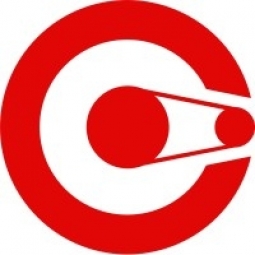实例探究.
添加案例
我们的案例数据库覆盖了全球物联网生态系统中的 22,657 家解决方案供应商。
您可以通过筛选条件进行快速浏览。
Download Excel
筛选条件
-
(5)
- (5)
-
(2)
- (2)
- (4)
- (1)
- (1)
- (5)
- (3)
- (1)
- (4)
- (1)
- (1)
- (1)
- (1)
- 查看全部 5 用例
- (6)
- (2)
- (6)
Selected Filters

|
DevicePilot IoT Service Monitoring Case Study
DevicePilot's customers, such as POD Point, have connected devices deployed in the field, and services are delivered on top of these devices. The challenge was to ensure that these services are delivered effectively and efficiently. Initially, the company needed simple notifications to be distributed to various platforms like email or Slack. The next step was to integrate tickets into the service management platform, which required bidirectional programmatic links with the customers' ticketing CRM system. This was a time-consuming process, taking around 10 minutes to create a ticket manually.
|
|
|

|
Monica Vinader Leverages Cyclr for Enhanced Customer Experience
Monica Vinader, a global demi fine jewellery brand, was facing a challenge in handling integrations. As a data-driven and tech-enabled company, they were focused on optimizing their customers' experiences as well as their own operational processes. However, their existing method of handling integrations was proving to be inefficient. They were using marketing automation software or using their resources to maintain their systems, which resulted in long waiting and development time. Their initial problem was that they were replatforming their CRM email tool and needed a method to address the abandonment email use case. They needed to find a solution to help solve this; whether it was a separate vendor, such as a marketing automation tool, an off-the-shelf product where JavaScript code was added to their website, building it themselves with their own development team, or see what is on the market in terms of toolkits for building flows to manage data pipelines.
|
|
|

|
Leadoo Case Study
Leadoo, a conversion optimization platform, was facing challenges with customer integrations. As they help their customers generate and convert more leads, they wanted the Leadoo service to integrate seamlessly with their pre-existing processes. Prior to using Cyclr, Leadoo dealt with these integration requests in two ways: sending the information for how to achieve the integration to the customer, relying on the customer fulfilling and correctly setting up their integration on Zapier themselves, or directly creating the integration for their customer inside their own Zapier account. This required some back and forth to scope their user's integration requirement and Leadoo to get the customers credentials and authenticate on their behalf.
|
|
|

|
Drive Social Media Case Study
Drive Social Media was seeking a solution to streamline the flow of client data and accurately demonstrate the return on their marketing efforts. Prior to using Cyclr, Drive was either building integrations themselves or having clients manually enter their data into Drive's systems. This process was time-consuming and prone to mismanagement. Drive wanted to find an easier way to manage data and chose to work with Cyclr due to its user-friendly interface, excellent support, and the ability to implement branching logic for all of Drive's integrations.
|
|
|

|
Chargify Case Study
Chargify, a leading billing and subscription management platform for B2B SaaS companies, needed to integrate their product with a variety of applications to become a key part of the global SaaS ecosystem. They maintain native integrations to top ERP and CRMs, such as Salesforce, Hubspot, and NetSuite. However, they needed a solution for customer-specific requirements that were outside of these native integrations. Chargify also wanted to service their prospects' new, unsupported, integration requests without compromising on deals due to potentially lengthy integration development processes. They needed a flexible solution that could quickly execute the integration build, even if a connector was not readily available.
|
|
|

|
Austin Lawrence: Harnessing Low-Code iPaaS for System Integration
Austin Lawrence, a growth marketing firm, was using Zapier to implement clients' integration requests. This included using Zapier's email parser to enable emails to be routed into a system. However, issues arose when they began to receive more complex integration requests. It was evident that Zapier, despite its strengths, was not going to meet their requirements for particular integrations. Part of their engagement with one of their clients was to help them to implement subscription billing. Which was a change of business strategy for this client.
|
|




